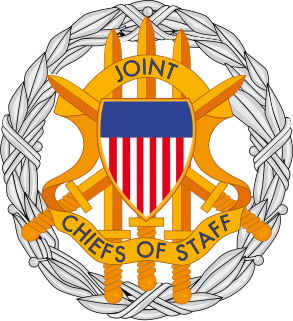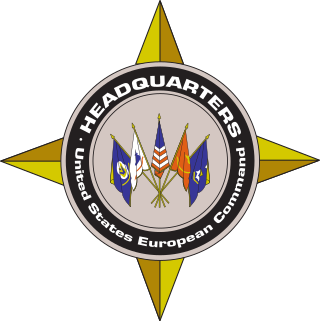In military organisation, unity of command is the principle that subordinate members of a structure should all be responsible to a single commander.
In military organisation, unity of command is the principle that subordinate members of a structure should all be responsible to a single commander.
The military of the United States considers unity of command as one of the twelve principles of joint operations: [1]
Unity of command means that all forces operate under a single commander with the requisite authority to direct all forces employed in pursuit of a common purpose. During multinational operations and interagency coordination, unity of command may not be possible, but the requirement for unity of effort becomes paramount. Unity of effort—the coordination and cooperation toward common objectives, even if the participants are not necessarily part of the same command or organization—is the product of successful unified action.
When the principle of unity of command is violated problems quickly develop. An example occurred in Afghanistan in 2006 when Combined Forces Command-Afghanistan passed control of the ground fight to the International Security Assistance Force. This caused the operations to split between several unified commanders in charge of U.S. Central Command, the North Atlantic Treaty Organization, and the U.S. Special Operations Command, which caused significant operational problems. [2]

The Army of the Republic of North Macedonia is a defense force consisting of an army and air force; it is responsible for defending the sovereignty and territorial integrity of North Macedonia. Since 2005, it is a fully professional defense force compatible with NATO standards.

The Joint Chiefs of Staff (JCS) is the body of the most senior uniformed leaders within the United States Department of Defense, that advises the president of the United States, the secretary of defense, the Homeland Security Council and the National Security Council on military matters. The composition of the Joint Chiefs of Staff is defined by statute and consists of a chairman (CJCS), a vice chairman (VJCS), the service chiefs of the Army, Marine Corps, Navy, Air Force, Space Force, and the chief of the National Guard Bureau. Each of the individual service chiefs, outside their JCS obligations, work directly under the secretaries of their respective military departments, e.g. the secretary of the Army, the secretary of the Navy, and the secretary of the Air Force.

The chairman of the Joint Chiefs of Staff (CJCS) is the presiding officer of the United States Joint Chiefs of Staff (JCS). The chairman is the highest-ranking and most senior military officer in the United States Armed Forces and the principal military advisor to the president, the National Security Council, the Homeland Security Council, and the secretary of defense. While the chairman of the Joint Chiefs of Staff outranks all other commissioned officers, the chairman is prohibited by law from having operational command authority over the armed forces; however, the chairman does assist the president and the secretary of defense in exercising their command functions.

Civil-Military Co-operation (CIMIC) is the means by which a military commander connects with civilian agencies active in a theatre of operations.

The Goldwater–Nichols Department of Defense Reorganization Act of October 4, 1986Pub.L. 99–433,, made the most sweeping changes to the United States Department of Defense since the department was established in the National Security Act of 1947 by reworking the command structure of the U.S. military. It increased the powers of the chairman of the Joint Chiefs of Staff and implemented some of the suggestions from the Packard Commission, commissioned by President Reagan in 1985. Among other changes, Goldwater–Nichols streamlined the military chain of command, which now runs from the president through the secretary of defense directly to combatant commanders, bypassing the service chiefs. The service chiefs were assigned to an advisory role to the president and the secretary of defense, and given the responsibility for training and equipping personnel for the unified combatant commands.

United States Indo-Pacific Command (USINDOPACOM) is a unified combatant command of the United States Armed Forces responsible for the Indo-Pacific region.

The Incident Command System (ICS) is a standardized approach to the command, control, and coordination of emergency response providing a common hierarchy within which responders from multiple agencies can be effective.

United States Strategic Command (USSTRATCOM) is one of the eleven unified combatant commands in the United States Department of Defense. Headquartered at Offutt Air Force Base, Nebraska, USSTRATCOM is responsible for strategic deterrence, global strike, and operating the Defense Department's Global Information Grid. It also provides a host of capabilities to support the other combatant commands, including integrated missile defense; and global command, control, communications, computers, intelligence, surveillance, and reconnaissance (C4ISR). This command exists to give national leadership a unified resource for greater understanding of specific threats around the world and the means to respond to those threats rapidly.
The National Incident Management System (NIMS) is a standardized approach to incident management developed by the United States Department of Homeland Security. The program was established in March 2004, in response to Homeland Security Presidential Directive-5, issued by President George W. Bush. It is intended to facilitate coordination between all responders. The system has been revised once, in December 2008. NIMS is the common framework that integrates a wide range of capabilities to help achieve objectives.

The United States European Command (EUCOM) is one of the eleven unified combatant commands of the United States military, headquartered in Stuttgart, Germany. Its area of focus covers 21,000,000 square miles (54,000,000 km2) and 51 countries and territories, including Europe, Russia, and Greenland. The Commander of the United States EUCOM simultaneously serves as the Supreme Allied Commander, Europe (SACEUR) within NATO, a military alliance. During the Gulf War and Operation Northern Watch, EUCOM controlled the forces flying from Incirlik Air Base.
Principles of war are rules and guidelines that represent truths in the practice of war and military operations.

A unified combatant command (CCMD), also referred to as a combatant command, is a joint military command of the United States Department of Defense that is composed of units from two or more service branches of the United States Armed Forces, and conducts broad and continuing missions. There are currently 11 unified combatant commands and each are established as the highest echelons of military commands, in order to provide effective command and control of all U.S. military forces, regardless of branch of service, during peace or during war time. Unified combatant commands are organized either on a geographical basis or on a functional basis, e.g. special operations, force projection, transport, and cybersecurity. Currently, seven combatant commands are designated as geographical, and four are designated as functional. Unified combatant commands are "joint" commands and have specific badges denoting their affiliation.

Allied Command Transformation (ACT) is a military command of the North Atlantic Treaty Organization (NATO), formed in 2003 after restructuring.

Psychological operations (PSYOP) are operations to convey selected information and indicators to audiences to influence their emotions, motives, and objective reasoning, and ultimately the behavior of governments, organizations, groups, and individuals.

Command and control is a "set of organizational and technical attributes and processes ... [that] employs human, physical, and information resources to solve problems and accomplish missions" to achieve the goals of an organization or enterprise, according to a 2015 definition by military scientists Marius Vassiliou, David S. Alberts, and Jonathan R. Agre. The term often refers to a military system.
Area of responsibility (AOR) is a pre-defined geographic region assigned to Combatant commanders of the Unified Command Plan (UCP), that are used to define an area with specific geographic boundaries where they have the authority to plan and conduct operations; for which a force, or component commander bears a certain responsibility. The term may also be used in other countries worldwide but it originated within the United States Armed Forces. This system is designed to allow a single commander to exercise command and control of all military forces in the AOR, regardless of their branch of service.

A Joint Task Force is a "joint" (multi-service) ad hoc military formation. The task force concept originated with the United States Navy in the 1920s and 1930s.
Unity of effort is the state of harmonizing efforts among multiple organizations working towards a similar objective. This prevents organizations from working at cross purposes and it reduces duplication of effort. Multiple organizations can achieve unity of effort through shared common objectives. In military operations, unity of effort is similar to unity of command except it usually relates to coordinating organizations not in the same command, such as in interagency operations. In this case, unity of effort is often achieved through campaign plans or coordinating committees instead of through a unified commander. In emergency management, unity of effort describes the integrated approach by different levels of government and multiple civilian organizations in response to the event.

The United States Department of Defense (DoD) has a complex organizational structure. It includes the Army, Navy, the Marine Corps, Air Force, Space Force, the Unified combatant commands, U.S. elements of multinational commands, as well as non-combat agencies such as the Defense Intelligence Agency and the National Security Agency. The DoD's annual budget was roughly US$496.1 billion in 2015. This figure is the base amount and does not include the $64.3 billion spent on "War/Non-War Supplementals". Including those items brings the total to $560.6 billion for 2015.
The Joint Operations Headquarters is the Italian joint operational command directly reporting to the Chief of the Defence Staff. This command exercises the planning, coordination and direction of the military operations of the Italian armed forces, and on joint and multinational exercises and all activities connected to them. Through the COVI, the Chief of the Defence Staff is able to exercise his functions as Operational Commander of the Armed Forces.